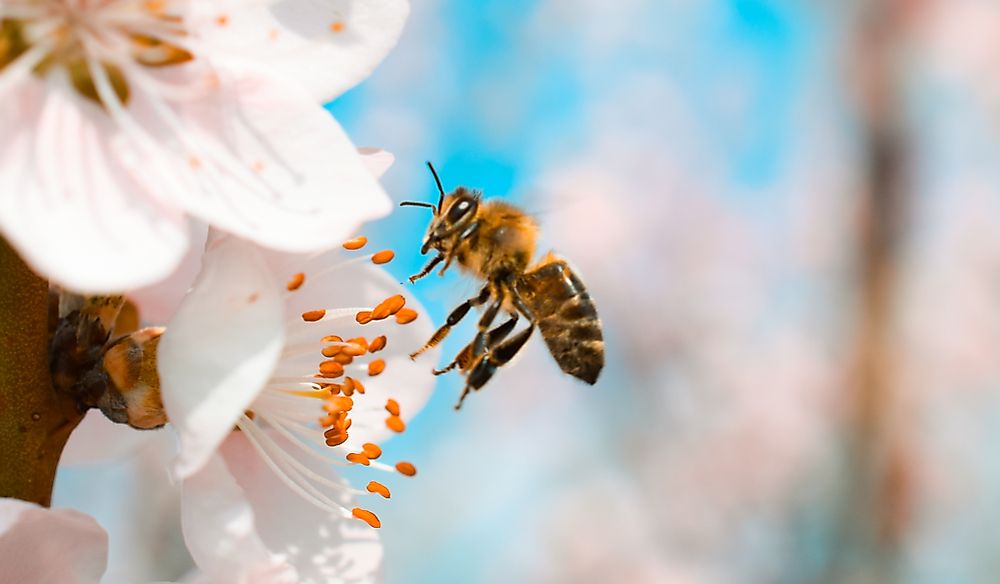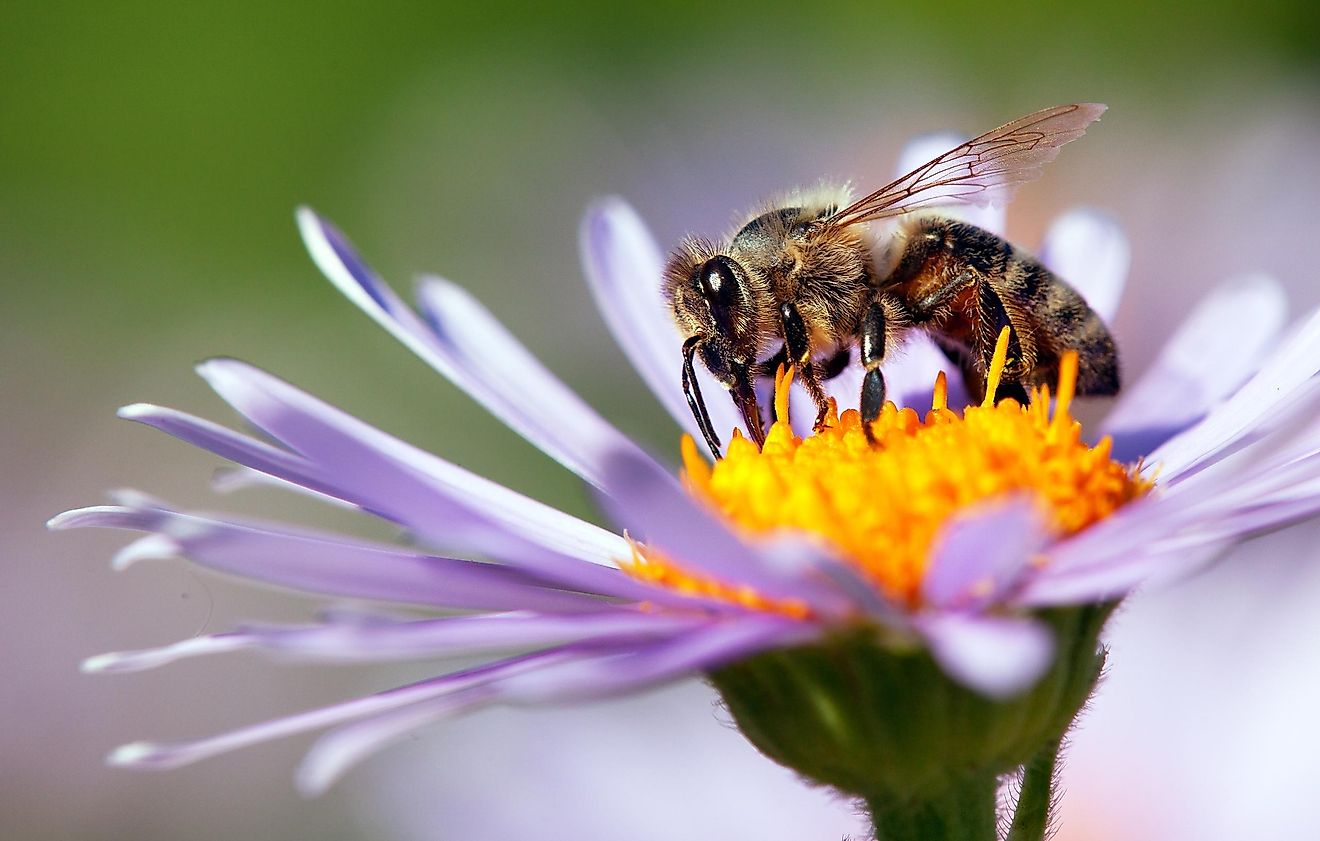How Long Do Bees Live? Understanding Bee Lifespan and Factors That Affect It
Bees play an important role in our environment with the aid of pollinating flora, which allows us to supply lots of the meals we devour. Given their importance, understanding how long bees live is vital for appreciating their important characteristic in nature. While most people realize that bees have quite short lives, the lifespan of bees can range extensively depending on the species, the function they play inside the hive, and environmental factors.
In this blog, we can discover how long bees live, the various factors that impact their lifespan, and the fascinating existence cycle of bees.
The Life Cycle of a Bee How Long Do Bees Live
To completely apprehend How Long Do Bees Live , it’s critical to first look at the life cycle of a bee. Bees undergo several ranges throughout their life, which include egg, larva, pupa, and adult. These stages vary slightly depending on the species of bee, however, the popular pattern remains constant throughout most bee species. The duration of time bees spend in each of those degrees can have an effect on their average lifespan.
- Egg Stage: The bee life cycle begins when the queen lays an egg. This egg is normally fertilized and could finally grow to be an employee, drone, or queen bee, depending on the conditions and remedy it gets. The egg hatches in approximately three to 5 days.
- Larva Stage: Once the egg hatches, it becomes a larva. During this stage, the bee is fed through nurse bees and grows unexpectedly. The larval degree lasts for about 6 days for employee bees and barely longer for queen bees.
- Pupa Stage: After the larval degree, the bee enters the pupa level, in which it begins to form its wings, legs, and different adult functions. This level lasts about 12 days for employee bees and as much as 16 days for queen bees.
- Adult Stage: After emerging from the pupa, bees input the grownup degree. This is while bees become practical, running to preserve the hive (worker bees), mating with the queen (drone bees), or laying eggs (queen bees). The period of the grownup degree is in which the variance in lifespan, on the whole, takes place.
How Long Do Bees Live Based on Their Role?
The lifespan of a bee is heavily stimulated through its position in the hive. Worker bees, drones, and queen bees all have distinctive lifestyle expectancies. Understanding those roles offers us a clearer image of the varying lifespans of bees.

1. Worker Bees
Worker bees are the maximum common bees in a hive. They are ladies that don’t reproduce however serve many essential capabilities, including foraging for nectar and pollen, protecting the hive, and worrying for the queen and larvae. Worker bees have the shortest lifespan of all bee sorts. Generally, employee bees stay for approximately 5 to six weeks throughout the energetic summer season months. During this time, they may typically spend their lives working tirelessly inside the hive, starting as nurses and progressing to foragers as they get older.
In iciness, however, when the hive is much less active, worker bees can live longer, from time to time as much as several months, because the hive is going right into an extra dormant state and bees do not work as tough.
2. Drone Bees
Drone bees are the male bees of the hive. Their number one reason is to mate with the queen bee all through the breeding season. Unlike worker bees, drones do now not forage, guard the hive, or care for the young. They genuinely exist to satisfy their reproductive function. Drone bees have a shorter lifespan in comparison to queen bees, however barely longer than employee bees.
Typically, drones live for approximately 8 weeks. They emerge from their pupa degree, and mate with the queen, after which die rapidly later on. If they no longer mate with the queen, they’re frequently expelled from the hive because the climate gets chillier, leaving them to perish outside.
-
Queen Bees
Queen bees are the reproductive girls within the hive. Their number one function is to lay eggs, ensuring the hive’s populace stays strong. Queen bees have the longest lifespan of any bee inside the colony. A queen bee can live for several years, normally between 2 to 5 years, although some queen bees have been recognized to stay up to 7 years. Queen bees are essential to the survival of the hive and might stay lots longer than employee bees and drones because they have a special food plan and function that enables preserve their fitness.
A queen’s longevity is also inspired by using her capacity to lay eggs effectively and the hive’s want for a brand new queen. If the queen’s egg-laying ability decreases, the hive may additionally replace her with a new queen. In preferred, the lifespan of a queen bee is a good deal longer than that of worker bees and drones due to her loss of wear and tear from the obligations that people and drones perform.
Factors That Affect Bee Lifespan
While a bee’s role within the hive determines its well-known lifespan, several different elements can impact how long bees live. These factors include environmental conditions, disorder, predation, and the general fitness of the hive.
1. Environmental Factors
Bees are pretty sensitive to environmental situations, and the weather can have a widespread impact on their lifespan. For example:
- Temperature: Bees thrive in heat conditions, and severe cold can shorten their lifespan. Worker bees specifically, at some stage in the wintry weather months, stay longer because of the reduced pastime within the hive.
- Food Availability: Access to nectar and pollen is critical for the fitness of the hive. In regions in which food is scarce or polluted, bees may be unable to live as long. A lack of food can result in malnutrition, weakening the bees and decreasing their lifespan.
- Pesticides and Pollution: Exposure to insecticides, chemical substances, and pollution can significantly impact bees’ health and decrease their lifespan. Pesticides can cause contamination, reduce reproduction prices, and even cause colony fall-apart disorder, which has become a major issue for bee populations worldwide.
2. Predators and Threats
Predation with the aid of different animals also can shorten a bee’s lifespan and How Long Do Bees Live. Bees are preyed upon by birds, mammals, and different bugs, along with hornets and wasps. Predators that raid bee colonies can ruin hives and kill huge numbers of bees, reducing their universal lifespan.
In addition to predators, bees face threats from illnesses and parasites, including the Varroa destructor mite, which weakens and kills bees. The lifespan of bees in colonies laid low with such illnesses is notably shortened.
3. Colony Health
The universal fitness of the colony can impact the lifespan of character bees. A strong, wholesome colony with lots of meals and an effective queen will produce employee bees that live long and work successfully. On the other hand, a weak colony struggling with disease, inadequate meals, or a failing queen will result in shorter lifespans for all bees in the colony.
How Long Do Bees Live Inside the Wild vs. Captivity?
The lifespan of bees can vary depending on whether or not they’re within the wild or in managed hives. Bees inside the wild face many challenges, consisting of exposure to predators, disorder, and meal shortages, that can restrict their lifespan. In trendy, wild bees generally tend to have shorter lifespans than bees stored in controlled, managed environments.
In managed hives, beekeepers can provide bees with adequate food, guard them from predators, and manage their fitness through remedies for diseases and pests. This can permit the bees to live longer and extra efficient lives in comparison to wild bees. For example, queen bees in controlled hives may stay for numerous years, while wild queen bees may most effectively survive 1 to two years earlier than being changed to know How Long Do Bees Live.
How Long Do Bees Live Based on Species?
There are hundreds of species of bees, and their lifespans can vary extensively. Honey bees, the most famous form of bee, have a lifespan of five to six weeks for employees and 2 to five years for queens. However, other species of bees, inclusive of bumblebees and solitary bees, could have distinctive lifespans.
- Bumblebees: Worker bumblebees typically live for three to 6 weeks, while queen bumblebees can continue to exist through the iciness and live for numerous months or even up to a year.
- Solitary Bees: Solitary bees, unlike honey bees and bumblebees, do now not stay in colonies and feature varied lifespans. Some species of solitary bees stay for just a few weeks, at the same time as others can live for as much as a year.
Each species has adapted to its environment in ways that have an impact on its lifespan and function inside the atmosphere.
Conclusion
The lifespan of bees varies significantly depending on their species, position inside the hive, and environmental elements. Worker bees generally live for only a few weeks, drones live a chunk longer, and queen bees can live for numerous years. Various elements which include food availability, environmental conditions, sicknesses, and colony fitness all play important roles in figuring out how long bees live.
Bees are necessary to pollinate our vegetation and generate the food we consume.
By knowing how long bees stay and the factors that affect their lifespan, we will better admire the importance of defending those crucial bugs. Conserving bee populations is essential for making sure biodiversity and keeping wholesome ecosystems. As people, we can support bee conservation efforts by planting bee-pleasant plant life, decreasing pesticide use, and supporting beekeepers.
By maintaining a healthful environment for bees, we are able to help ensure their survival for generations to come back and understand How Long Do Bees Live, reaping benefits now not only for the bees but additionally the sector around us.


